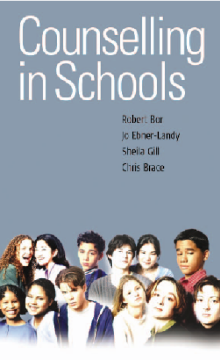
Additional Information
Book Details
Abstract
`This book will be of use to counsellors seeking to develop existing skills in school settings. The authors present clear descriptions of various counselling skills, and practical ideas around working with secondary aged pupils' - Education Psychology in Practice
`Robert Bor and his colleagues have produced a book which will be of great value both to professional counsellors and to practising school teachers. The wisdom of the authors, based as it is on practical experience, brings a welcome realism, balance and accessibility to the text. Head teachers and all those concerned for the pastoral care of school pupils will find a wealth of advice on issues such as traumatic incidents and disaster recovery plans, bullying, sibling rivalry, anxiety and sexuality. The reader is allowed to eavesdrop on the consultations of school counsellors. There is a particularly useful chapter on setting up and maintaining a school counselling service, which sets out the questions to be faced in advance by the Head and by the counsellor. I commend the book very warmly' - Stephen Baldock, High Master, St Paul's School, Barnes
`Counselling in Schools is an excellent resource for students in training, professionals already working in schools and those thinking of setting up a counselling service' - Heather Jones, Head teacher, Yardleys School, Birmingham
Counselling in Schools is a practical, contemporary guide to providing effective counselling support within school settings. Recognizing the very specific nature of this area of counselling practice and the uniqueness of every school, the authors provide a flexible framework and guidelines for working collaboratively with pupils, families and colleagues.
The authors do not aim to give prescriptive responses to all the problems which pupils may bring to counselling, rather to help counsellors develop their skills in responding to each individual in the most appropriate way. They emphasize the need for counsellors to be resourceful and creative in their approach and stress the reality that change is always an inevitable feature of working in schools.
Written from a systemic and solution-focused perspective and illustrated throughout with vivid case studies, the book examines:
- the need for school-based counselling services
- the range of problems with which pupils present
- legal issues involved in counselling children
- the role and skills of the school counsellor
- specific challenges faced in school settings
The book provides a practical toolkit for counsellors, including advice on setting up a new counselling service, a framework for evaluating the service and accepted guidelines on key issues such as confidentiality and providing access to records.
Counselling in Schools is an invaluable resource for anyone wishing to provide counselling support for pupils in secondary education. Counsellors, teachers, social workers and education welfare professionals will find it a source of practical information and creative ideas.
`Counselling in Schools is an excellent resource for students in training, professionals already working in schools and those thinking of setting up a counselling service' - Heather Jones, Headteacher, Yardleys School, Birmingham
Table of Contents
| Section Title | Page | Action | Price |
|---|---|---|---|
| Preface vii | |||
| Acknowledgements ix | |||
| Acronyms x | |||
| Introduction | |||
| Background 1 | |||
| Setting 2 | |||
| Livestock disease and animal health services 4 | |||
| Animal health improvement training programme 8 | |||
| The farm and veterinary clinic , 9 | |||
| The training course - selection and content 10 | |||
| The beginners course 12 | |||
| Training resources 13 | |||
| The medicine kit 17 | |||
| The refresher course 19 | |||
| AHITP follow-up role 20 | |||
| Refresher course survey 21 | |||
| Field visits 22 | |||
| Introduction 22 | |||
| Palpa District 24 | |||
| VAHWs in Baugha Pokhara Thok 31 | |||
| South Lalitpur 33 | |||
| VAHWs in South Lalitpur 38 | |||
| Conclusions 41 | |||
| Appendices 46 | |||
| Appendix 1: Diseases treated by the VAHWs 46 | |||
| Appendix 2: Beginners' course contents 48 | |||
| Appendix 3: Refresher course contents 49 | |||
| Appendix 4: The AHITP recommended medicine kit 50 |
